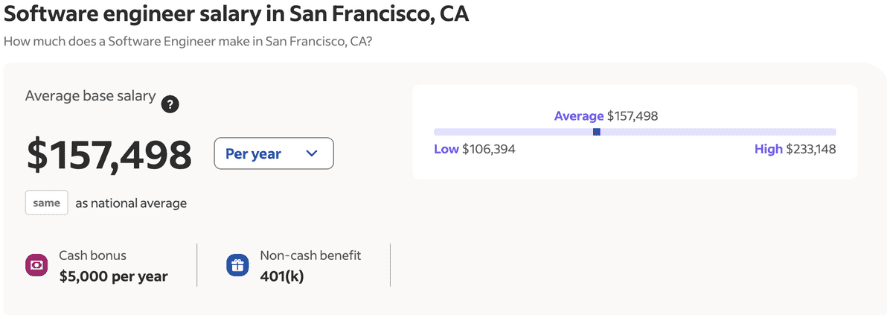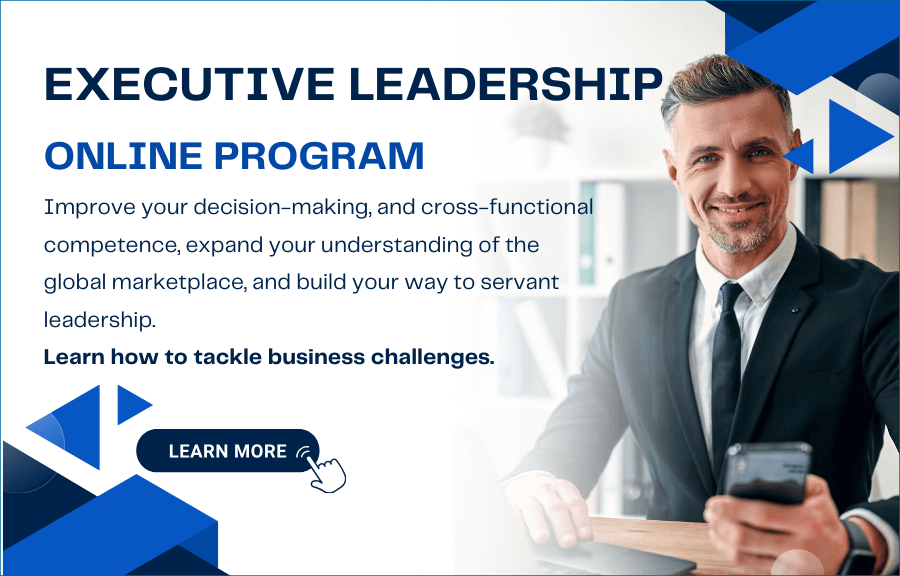HR Leadership: 11 Skills You Need to Be an HR Leader
Good HR leadership derives human resources management, talent acquisition, and development and minimizes staff turnover. Read now. The human resources department of an organization is one of the key and vital functions of an organization. Because, HR leadership creates and executes a human resources management policy, rewards and punishments, how to acquire talents, how to develop them, and how to minimize staff turnover. We will go through the primary functions of the HR department, good examples of HR leadership, and how to become a good HR leader in this article.
In this article
📌 Hint: Do not skip this article, you will find FREE Leadership Training resources throughout the article.
💡 You might be interested in the 21 Leadership Skills Professionals Expect to See in the Workplace article.
What is HR Leadership?
Human resources is a critical department in an organization. Depending on the size of the organization, the size of the Human resources department varies. For a startup that has a few employees, typically, human resources functions are done by an individual performing other functions or outsourced to a freelancer. For conglomerates, big companies, or multinational companies, the size of the Human resources department will be relatively big as well.
HR leadership is the leaders or managers creating human resources management strategies such as how to acquire talents, how to develop talents, how to improve motivation and commitment in the workplace, and how to minimize staff turnover. The workforce of an organization is its strategic competence. The better the staff, the better outputs will be produced and the organization will succeed. Therefore, HR leadership and their practices play a vital role in the success of the organization.
💡 Read 15 Types of Leadership article to learn about other leadership styles.
Enhance Your Leadership Skills – Executive Leadership Training Program
San Francisco Business School offers an online, self-paced comprehensive executive leadership training program. You can consider enrolling in this program to improve your HR leadership skills.
Primary Functions of HR Leadership
The human resources department of an organization performs various tasks. We will list the major 5 tasks of the HR leadership below.
1- Human Resources Management
Human resources management includes operational tasks and one-off projects. Keeping records of the employees, documentation, and communication with legal authorities regarding working hours, annual leaves, and managing performance review systems are parts of HR management.
If the organization is big and there are thousands of employees working, typically, Human Resources Management Systems (HRMS) is in place. HRMS eases the management and tracking of HR leadership. Employees log in and report their annual leaves, sick leaves, training expectations, etc. through these systems.
2- Talent Acquisition
Talent acquisition is critical for organizations. Based on research, 19% of an organization is outperformers. They are the talents and they pioneer the organization through its vision. Typically, they prefer a laissez-faire leadership where their leaders set the expectations and goals and leave the rest to them.
HR leadership performs various strategies for talent acquisition. There are head hunters, searching through various channels such as job sites, LinkedIn, and social media, and trying to find the right talents for the organizations.
Typically, talents are at the top of their game. They earn more than the average in the industry and organization, they have demanding training and skills development requests and they expect a rich compensation package to change a job. Therefore, it is not easy to attract talent to change their job. In some cases, if the talent is a critical resource, some companies pay outrageous transfer prices to the talent.
Free Online Leadership Skills Training Program
One of the requirements to be a good leader is to improve yourself continuously. The best way to do this is, to enhance your competence through training. Take a step ahead and jumpstart your leadership competence. Enroll in our 1-hour Free Leadership Training program.
3- Talent Retention
Talent acquisition is hard, however, talent retention is even harder. After you acquire a talent in your team or organization, monetary compensation is not enough to keep them in the organization.
Talents look for a workplace where their ideas are valued, where they can develop their skills, and willing to take on challenging tasks. If you cannot sustain these, talents will be demotivated, and look for a job change and be sure that they will be quick as they are talented and demanded outside.
HR leadership must ensure a workplace where talents are in frequent communication with their leaders, and their training and development needs should be addressed. An authoritarian leadership or a transactional leadership style won’t work with the talents. You can consider applying servant leadership principles to retain talents.
4- Compensation, Rewards & Penalties
HR leadership decides and manages the compensation packages, rewards, penalties, promotional paths, and grades in an organization. Each industry and role has an industry-average salary. However, HR leadership should decide whether their organization is willing to pay over average, whether will there be exceptions for talent acquisition or the salary ranges for each grade in the organization.
For instance, if you are looking for a software engineer in San Francisco, CA, it is probably one of the most competitive places in the world. The average salary of a software engineer is $160,000 in San Francisco.


Note that, this is average. If you need high-skilled resources, you have to pay much higher, offer bonuses, and even stock options to attract talent.
Watch Laura’s 30 Seconds Experience – Executive Leadership Program
Hear from Our Alumni Laura Smith, Head of Design. Laura attended the Executive Leadership Program at SFBS.

5- Improving Motivation & Commitment
One of the critical tasks of the human resources department is measuring employee engagement, motivation, and commitment. There are several techniques and tools used for measuring employee motivation.
For instance, managers can have a budget to celebrate the project milestones, HR department can plan happy Friday events, or quarterly parties to informal and motivate employees.
You might be interested in Blake Mouton Grid as well.
Good HR Leadership Examples
Several organizations are applying good HR leadership practices. We have taken into account Comparably’s latest happiest employees survey. Because the happiness of an employee is directly related to good HR leadership practices.
The top three companies that have the happiest employees in the latest Comparable survey are as follows.
1- Workday
Workday is a provider of cloud-based enterprise applications for finance and human resources management services. Workday is rated an A+ by the 846 employees who have left culture ratings. Following is a quote from a Workday employee showing the efficiency of HR leadership at Workday.
“The most positive part of the company culture is the support, encouragement, and genuine happiness for colleagues as we grow and develop and/or achieve wins. The importance placed on ethics, equality, and diversity are inspiring at Workday.”
2- Uber
Uber Technologies, Inc. provides ride-hailing services, food delivery, and freight transport. It is headquartered in San Francisco and operates in approximately 70 countries and 10,500 cities worldwide. Uber is rated an A+ by the 784 employees that have left culture ratings. Following is a quote from an Uber employee.
“What makes me happiest at work is the people. #greatmindsdontthinkalike is what makes Uber such a happy place to work. You will work with everyone from everywhere.”
3- Topgolf
Topgolf is a golf driving range game with electronically tracked golf balls and automatically scored drives that started in 2000 and grew to become a multinational sports entertainment company. Topgolf is rated an A+ by the 575 employees that have left culture ratings. Following is a quote from a Topgolf employee that shows the HR leadership efficiency.
“The most positive things about the culture and the environment at Topgolf are the interactions and fun that I have with coworkers. They try to make every shift enjoyable no matter how slow or busy it is. It’s such a fun environment.”
How to Become a Good HR Leader
A leader has to possess several team leadership skills. However, there are certain skills that a good HR Leader must have. We have listed the top 11 skills needed for good HR leadership.
1- The HR Leader Must Be a Good Communicator
The HR leader manages its team, and employees and encourages the employees to perform at their best and reach the goals of the team and organization. To ensure this, HR leadership has to establish several communication channels within the team or cross-functional departments. For instance, HR leaders must analyze the needs of the employees, talk with them, assess their needs, and address them in the best way they can. To be able to get what you need, you must be a good communicator. That is why it is at the top of the 21 team leader skills.
2- HR Leadership Requires Integrity
The HR leader is the role model of the organization. They should be inspiring the employees and a model for the organization on what kind of people will be promoted to leadership roles. Therefore, HR leadership must be trustable, and show authentic leadership. They have to be at the same distance as all team members about professional topics or work-related points.
Read more about ethical leadership.
3- The HR Leader Should be an Excellent Motivator
Successful work results are achievable only if there is good teamwork. To have good teamwork, all individuals in the organization should be motivated so that you can get the maximum performance from each of your team members. You can use incentives, promotions, or other methods to encourage your employees. Even showing people empathy and spending time with them for their self-interest will boost their performance.
4- HR Leadership Skills – Charisma, Persuasion and Influence
Charisma, persuasion, and influence are important team leader skills as well. Charisma is described as compelling attractiveness or charm that can inspire devotion in others. However, in business, charisma is a little bit more than personal appearance. Typically, leaders who have expert power, who are knowledgeable in their domain, are found charismatic by their subordinates.
You can improve your technical knowledge in your domain to increase your expert power and develop your charisma. This will increase your persuasiveness and influence on other people which in result produces better work results.
5- HR Leadership Sets Goals for Everyone
Professionals expect fair distribution of tasks and workload among the team. This does not mean that a senior team member will have a similar task to a junior team member. The HR leader should know the competence, level, experience, and capacity of each team member and assign tasks and goals accordingly. Otherwise, there might be a feeling of “unfair management” among the team members and this can cause underperformance of the team.
6- Perseverance – Commitment
Would you be willing to have ever-changing goals, tactics, and targets in your work? That would be exhausting and demoralizing. No matter what it costs, HR leaders should do everything they can to reach the goals of the team. This is called perseverance and commitment. If leaders give up on the roadblocks or problems they face, teams will sacrifice as well.
7- Conflict Management
Conflicts can arise between team members and cross-functional teams as well. For instance, if the organization has only one scarce resource and if that resource is required for different projects at a time, conflicts may arise between the team leaders. HR leaders may need to develop policies or intervene in these kinds of conflicts to solve the issue before it creates friction.
HR leadership requires seeking a win-win resolution in conflicts, if not possible, then, try to achieve a resolution that will make the majority of the parties happy. In some cases, autocratic leadership approaches may be used. However, avoid using these for senior and talented employees.
8- Team Leader Should Be Agile and Adaptive
We are living in an ever-changing world. Depending on the goals and projects, the resources may need to change their direction, methods, and processes. Thus, the HR leader should be the supporter and pioneer of agility and adaptability. HR leadership should guide and instruct their teams to adapt to changing conditions.
9- Team Building
HR leadership requires excellent team-building skills. Tuckman identifies team formation through four stages, Forming, Storming, Norming, and Performing.
- Forming: The team is gathering at this stage. The team is structured, and no one knows each other enough.
- Storming: The team starts to perform and interpersonal conflicts start to arise.
- Norming: In this stage, team members are creating new ways of doing and being together. Team members start to trust each other.
- Performing: The most productive stage of the team. Everyone knows each other, and support is at the highest degree.
HR Leaders should be aware of the arising conflicts within the team and seek a resolution quickly. Also, team building activities such as gathering for non-work related meetings, celebrating milestones, and verbal appreciation are crucial for team building.
10- Team Leadership Feedback (giving and receiving)
In many cases, HR leaders or managers come together with their team members annually or every six months to make a performance review. This is a very long period. Leaders should be visible and approachable. The feedback mechanism should be two-way. Leaders should give feedback to the team members, well, this is normal. However, HR leaders should be mature enough to receive any type of feedback from team members as well.
Actually, feedback is one of the best ways to see how others see you. Therefore, make sure you establish a productive feedback mechanism in your organization.
11- HR Leaders apply Situational Leadership
HR leaders apply situational leadership to address different situations, different experience levels, and maturity in an organization. Hersey and Blanchard developed the Situational Leadership theory in the 1970s. Since then, it has been widely adopted by several leaders focusing on short-term goals and is well suited to HR leadership style as well.
The situational leadership theory focuses on four different types of behaviors, Directing, Coaching, Supporting, and Delegating. The model supports different styles for different maturity and performance levels as well. An organization will have different types of individuals who have different years of experience and character. Therefore, situational leadership is a key to approach different types of resources in an organization.
Read more about situational leadership.
Summary
HR leadership manages and leads the human resources department of an organization. The main roles of the HR leadership are managing employee records and data, talent acquisition and retention, increasing motivation and minimizing staff turnover.
Several companies are applying different HR leadership styles. Considering the happiness of the employees, Workday, Uber, and Topgolf, are the top three companies where employees are the happiest. The culture and HR practices of these companies can be inspiring for other companies who are willing to improve their workforce motivation and performance.
Being an HR leader requires several leadership skills. We have listed the top 11 skills that an HR leader needs. Communication, integrity, charisma, encouragement, commitment, conflict management, and agility are the demanded skills for HR leaders. Situational leadership is a style that HR leaders should apply for different types of resources at different experience levels.

